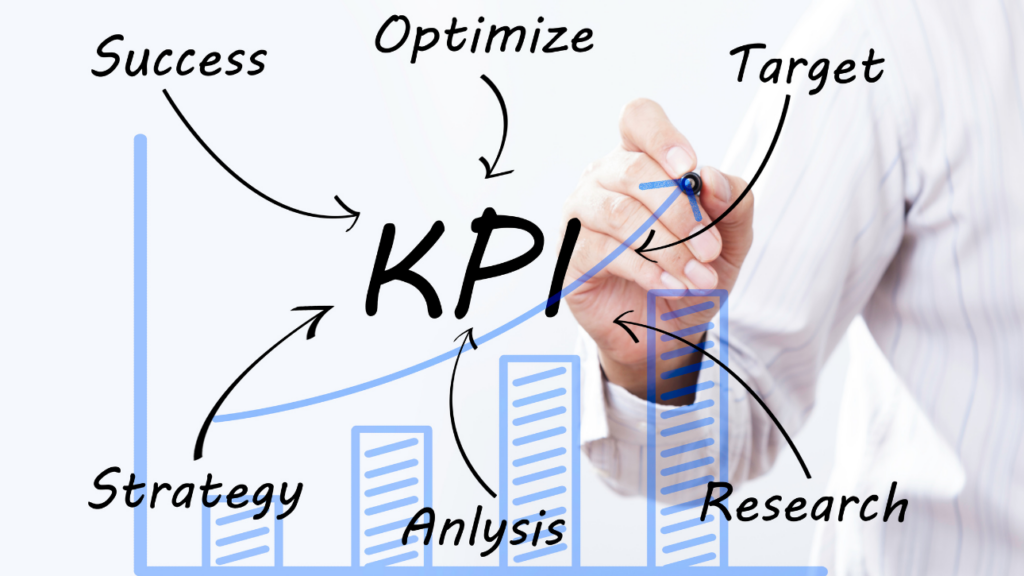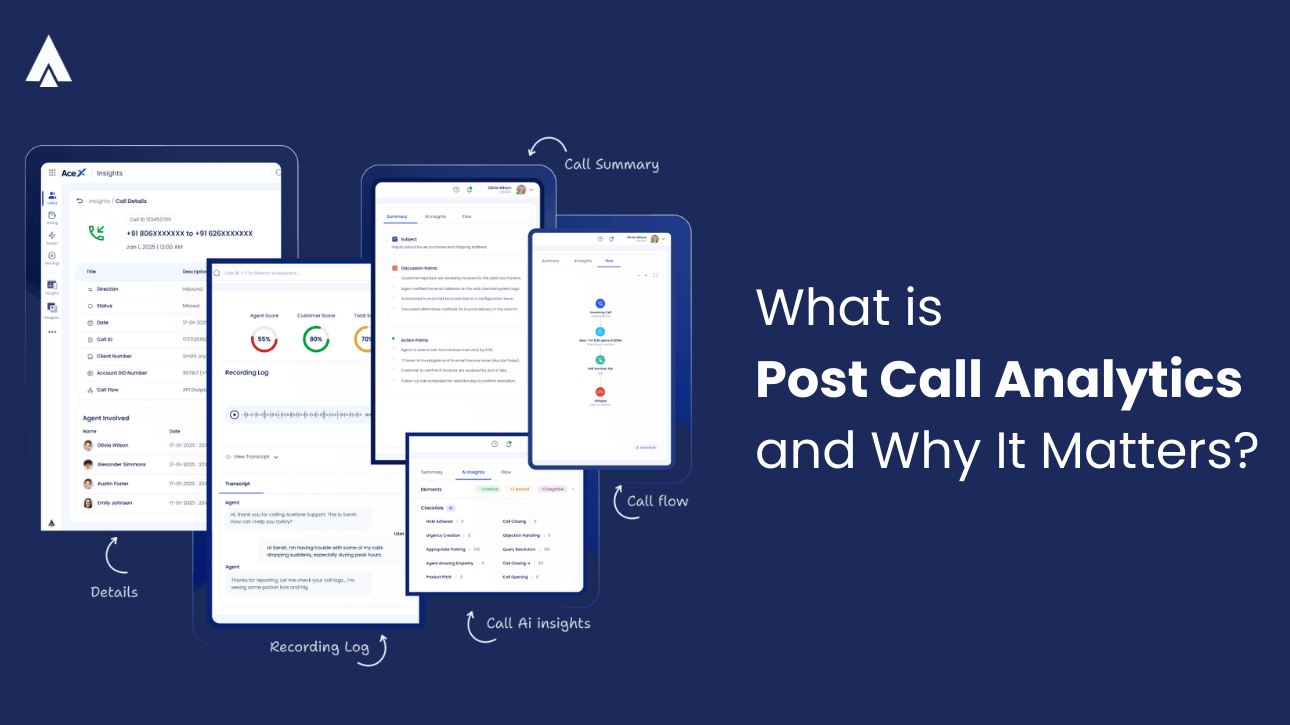Businesses today face several challenges that demand proactive coordination and performance tracking. The bigger your organization gets, the more difficult it gets to address those challenges. Despite that, it’s crucial for you to address them head-on to stay ahead of the competition.
One powerful tool that can help you do so with ease is contact center software. These solutions have transformed the way businesses handle customer interactions. They have revolutionized managing call center operations by integrating cloud technology and streamlining processes into daily operations. This is why the cloud-based contact center market growth is projected to reach $162.5 Billion by 2033.
Without cloud, you are more likely to struggle running your contact center operations smoothly.
Keep reading to learn more about the top ways to boost your the efficiency of your contact center operations with cloud-based solutions.
What is Contact Center Operations?
A Contact center operations refers to managing all processes, technologies, and resources used to handle customer interactions. This includes phone, email, chat, and social media channels. The goal is to provide effective, personalised customer service.
With an omnichannel communication approach, they enable agents to manage customer interactions across platforms. For this, they use specialized tools known as contact center software to deliver efficient and consistent support.
What are the Essential Elements of Managing Contact Center Operations?
All operations teams, whether in marketing, revenue, or sales, share a common goal. It is to make their workflow faster, smarter, and more efficient. In a contact center, achieving this requires focusing on a few critical components.
Here’s what you need to begin:
1. Clear Goals, Metrics, and KPIs

To enhance the efficiency of your contact center operations, you first need to define what success means for your team through Key Performance Indicators(KPIs). For example, if your main focus is improving customer experience, you would track metrics like CSAT, CES, or NPS scores.
If increasing agent productivity is the priority, key metrics might include average response and resolution times for tickets, both at the individual and team levels. When adding new communication channels, such as chatbots, relevant KPIs could be the ticket deflection rate or first contact resolution rate.
2. Data Tracking, Reporting, and Performance Monitoring
After setting your priorities, the next step is to monitor performance and extract actionable insights from your data. Well-designed dashboards help teams keep track of the metrics that matter most. For agents, dashboards can provide real-time updates on incoming queries and personal performance stats.
Supervisors can use customized dashboards to oversee agent performance at both team and individual levels. They can also analyze customer trends to forecast case volumes, identify peak periods, and plan for seasonal demands to avoid overstaffing.
3. Comprehensive Technology
A key element of effectively managing contact center operations is selecting the right software solution. The ideal platform should enable your team to simplify workflows. It should also give your team quick access to all customer information in one place and offer real-time analytics.
The right technology can help you:
- Track essential metrics like customer hold times, agent retention rates, speech analytics, and cross-channel performance.
- Manage multiple communication channels—including social media, in-app chat, and email, from a unified platform.
- Automate routine workflows and tasks, allowing supervisors to better evaluate, assign, and optimize their teams.
4. Customer Service Operations Team
Monitoring contact center performance requires dedicated focus, so it’s important to establish your operations team as early as possible. Begin by defining the necessary roles and clearly outlining each position’s responsibilities.
On the top, managing the whole team should be the call center operations manager. This person should be responsible for overall strategy. This role should be followed by multiple call center operations supervisors to manage day-to-operations. Other than that, you will need a team of passionate and friendly agents.
When hiring, prioritize candidates who are data-focused, solution-driven, and well-versed in the latest technology trends.
Overcoming Contact Center Operations Challenges
Here are some challenges of contact center operations that will be overcome:
1. Communication Fragmentation
As businesses grow, they often experience communication issues because of different departments using various tools for communication. Using multiple tools slows down coordination, resulting in delayed responses and poor experience. Furthermore, it becomes increasingly challenging for businesses to align teams and centralize communication as they expand.
Solution
An omnichannel contact center solution brings all the communication tools into one place. By centralizing communication, teams can collaborate seamlessly and share information effortlessly. Doing so breaks down silos and enhances overall efficiency.
2. Inefficient Call Handling
Large call volumes can overwhelm traditional call centers, leading to long waiting times, high call abandonment rates, and frustrated customers. As a result, efficiently routing calls to the appropriate agents with the relevant expertise becomes a complex task, reducing customer satisfaction. Inefficient call routing or manual dialing causes delays and frustration. Leveraging auto dialer benefits, such as smart call pacing and fewer missed connections, can significantly reduce customer wait times and agent idle time.
Solution
Cloud call center solutions address this issue with smart call routing capabilities. They automatically route incoming calls to the most appropriate agents based on predefined criteria, such as skills, language, or department. It minimizes delay and swiftly connects customers to the right agent. Further, this routing results in improved customer experiences and increased agent productivity.
3. Limited Performance Visibility
Businesses need comprehensive insights into their operations to make data-driven decisions. Measuring agent productivity, customer satisfaction, and overall efficiency in real-time can become difficult without an efficient performance-tracking system. According to some contact center solution providers, maintaining high reporting quality standards is challenging with a multi-channel communication system.
Solution
A comprehensive contact center solution offers advanced reporting and analytics features. Managers can access real-time data on call volumes, response times, customer satisfaction scores, and agent performance. This actionable data empowers businesses to make informed decisions, optimize processes, and constantly improve performance, thus enhancing the overall customer experience.
4. Disconnected Customer Data
As customer data multiplies, maintaining and accessing a centralized database becomes challenging. Inconsistent customer profiles hinder personalized interactions, leaving customers feeling misunderstood and unvalued.
Solution
Integrating the contact center solution with CRM platforms provides agents a 360-degree view of customer data during interactions. This CRM integration ensures agents can access comprehensive customer profiles, including purchase history, previous interactions, and preferences. Equipped with this contextual information, agents can provide personalized support, anticipate customer needs, and deliver exceptional experiences.
5. Scaling for Growth
With business expansion, mid-size and large enterprises need scalable solutions that adapt to changing needs. Traditional call centers struggle to keep up with the increased demand for agents, multiple communication channels, and geographic expansion.”
Solution
A flexible and scalable contact center solution can seamlessly adapt to changing business needs. From expanding agent capacity to storing new communication channels and geographic locations, this solution enables businesses to scale without disrupting operations. The contact center solution ensures consistent and efficient customer support throughout the growth journey.
What are the Top 5 Call Center Operations Best Practices?
-Implement Cloud-Based Solutions
Transitioning to a cloud-based contact center solution is a game-changer for global businesses. Cloud technology offers scalability, flexibility, and cost-effectiveness, allowing you to adjust agent capacity as per demand fluctuations. With agents accessing the system from anywhere, you can ensure seamless customer support round-the-clock.
-Embrace AI and Automation
Leverage the power of Artificial Intelligence (AI) and automation to streamline repetitive tasks and enhance agent productivity. Implement chatbots for quick issue resolution and intelligent routing to direct customers to the correct agents. AI-powered analytics also provide valuable insights into customer interactions, enabling data-driven improvements.
-Provide Comprehensive Training
Equip your contact center agents with the right skills and knowledge through comprehensive training programs. Training should cover product or service expertise and also soft skills like effective communication and problem-solving. Well-trained agents deliver efficient and empathetic support to customers, increasing satisfaction levels.
-Optimize Call Routing
Efficient call routing reduces customer wait times and agent idle periods. Implement intelligent call routing algorithms that match customers with the most suitable agents based on skill sets, language, or previous interactions. This particular feature ensures a personalized customer experience and boosts agent efficiency.
-Utilize Multi-Channel Support
Cater to your global customer base by offering multi-channel support, including phone calls, emails, web chats, and social media interactions. Providing customers with their preferred communication channel increases accessibility and engagement, ultimately enhancing the overall contact center efficiency.
-Monitor and Analyze Performance
Regularly monitor contact center performance using real-time analytics and reporting tools. Track key performance indicators (KPIs) such as average handling time, first call resolution, and customer satisfaction scores. Analyzing this data helps identify bottlenecks and areas for improvement, guiding strategic decision-making.
-Foster Employee Engagement
Engaged agents are more likely to deliver superior customer service. Encourage open communication, recognize outstanding performance, and involve agents in decision-making. A positive and supportive work environment motivates agents to excel, positively impacting contact center efficiency.
Managing Call Center Operations Begins with the Right Technology
Efficiently managing call center operations relies not only on individual contributions but on the seamless coordination of roles that work together. From frontline agents handling interactions, to strategic call center managers guiding strategy and call center supervisors handling operations, every role plays a part in building a high-performing team.
By adopting best practices that promote collaboration, optimize processes, and keep the customer at the center, call centers can boost productivity, enhance satisfaction, and drive business growth.
To support these efforts and enable your team to excel, investing in the right contact center software is key.
If you’re looking for a contact center that will smooth your business operations without any complexity, get in touch with our experts and start your free trial today.
Call Center Operations FAQs
Improving contact center performance involves training agents effectively, using real-time analytics, implementing quality assurance programs, and adopting modern technology. Encouraging agent engagement, optimizing workflows, and regularly reviewing key metrics also enhance performance. A focus on customer satisfaction and continuous improvement drives better outcomes and more efficient service delivery.
The most effective customer service strategy centers on delivering consistent, personalized, and responsive support across all channels. Empowering agents, utilizing customer data, and implementing an omnichannel approach ensure seamless experiences. Prioritizing empathy, active listening, and swift resolution builds trust and long-term customer loyalty, leading to improved satisfaction and retention.
The four pillars of a contact center are People, Processes, Technology, and Customer Experience. Skilled agents (People), efficient workflows (Processes), advanced tools (Technology), and a focus on customer satisfaction (Customer Experience) together ensure the contact center operates smoothly, effectively handles interactions, and delivers high-quality support across communication channels.
Cloud-based contact center solutions offer flexibility, scalability, and cost savings. They enable remote work, quick deployment, and seamless updates. With real-time analytics, AI integration, and omnichannel capabilities, these platforms enhance customer service while reducing infrastructure costs and improving operational efficiency across global teams and diverse customer touchpoints.
Automation and AI streamline contact center operations by handling routine tasks, reducing wait times, and improving accuracy. Chatbots, virtual assistants, and predictive analytics enhance customer interactions and agent productivity. AI also enables better decision-making and personalized experiences, resulting in increased efficiency, customer satisfaction, and reduced operational costs.














